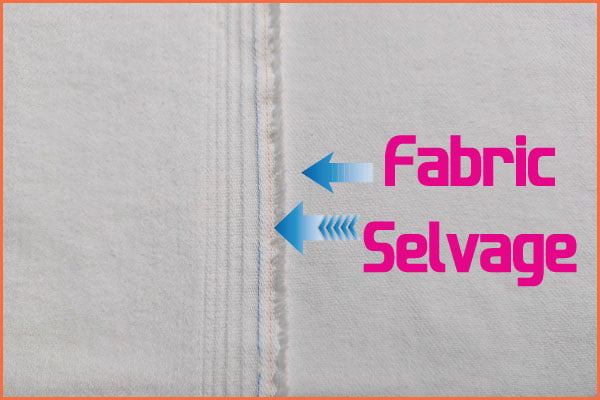A Guide to Different Types of Fabric Selvage
Last updated on July 22nd, 2023 at 11:52 pm
Definition of Fabric Selvage or Selvedges
In yard goods, the outer edges are constructed so they will not ravel. These finished edges are called the selvages (self-edges) and are often made with heavier and more closely spaced warp yarns than are used in the rest of the fabric by using more or stronger warp yarns or by using a stronger weave. Selvages (also called selvedges) provide strength to fabric for safe handling of the fabric. Selvage should not curl. The warp yarns always run parallel to the selvages. Proper use of the selvedges can also prevent the bowing and bias conditions that occur in some fabric. The weaving machines need mechanisms which through the formation of sufficiently strong selvedges bind the wefts together, thus imparting to the fabric a proper appearance and solidity and preventing the breaking up of the threads on the fabric edges during the subsequent operations.

In shuttle looms, there is no need for special selvedge; since the yarn is not cut after each weft insertion, the edges of the fabric are smooth and strong. On conventional shuttle looms, it is formed when the weft yarns turn to go back across the fabric. The conventional loom makes the same kind of selvedge on both sides of the fabric. At the present time, this is the only advantage of shuttle loom over shuttleless loom. In shuttleless weaving, since the weft yarn is cut after every insertion, there are fringe selvedges on both sides of the fabric. In this case, special selvedges are needed to prevent slipping of outside warp yarns out of the fabric.
Types of Selvedge Designs
There are several types of selvedge designs that are used for this purpose with shuttleless looms. The kind of selvedge used depends upon the economy of production and the expected use of the fabric.
Plain Selvedges
These selvedges are constructed of the simple plain weave with the same size yarns as the rest of the fabric, but with the threads packed more closely together.
Tape Selvedges
The tape selvedges are sometimes constructed with the plain weave but often are made of the basket or twill weaves, which makes a flatter edge. Tape selvedges are made of heavier yarns or ply yarns, which provide greater strength.
Split Selvedges
These are made by weaving a narrow width fabric twice its ordinary width with two selvedges in the center. The fabric is then cut between the selvedges, and the cut edges are finished with a chain stitch or hemming. Split selvedges are used when items such as towels are woven side by side and cut apart after weaving.
Fused Selvedges
These selvedges are made on fabrics of thermoplastic fibres, such as polypropylene, nylon, etc., by pressing a hot mechanical element on the edges of the fabric. The fibres melt and fuse together, sealing the edges.
Leno Selvedges
The leno selvedges are obtained by binding the wefts with strong additional threads working in leno or gauze weave and by eliminating through cutting the protruding weft ends. Half cross leno weave fabrics have excellent shear resistance. They are made with special leno weaving harnesses. The leno selvedge is used on some shuttleless looms.
Tucked-in Selvedges
The tucked selvedge is a technique used on some shuttleless looms. A device is used to tuck and hold the cut ends into the fabric edge. In tucked-in selvedge, the fringed edges of the weft yarns are woven back into the body of the fabric using a special tuck-in mechanism. As a result, the weft density is doubled in the selvedge area. The tucked-in selvedge was being only used for projectile weaving machines in the past; however, it is now also applied to other shuttleless weaving machines.





Nice article…
Well illustration…
Very good
I agree with you. I wish I had your passion for writing!